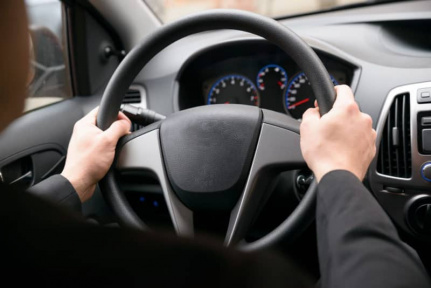
You might have experienced a situation when your vehicle moved on its own rather than following your steering input. The tendency of an automobile to follow the road’s contours and grooves instead of steering input is known as tramlining. In order to control the vehicle under these conditions, you will have to exert quite a lot of strength.
Its name tramlining has been derived from a tram trolley driver who did not steer and followed the path defined by rails.
Every vehicle experiences tramlining on various patches of road. The automatic movement of steering is a sign of it. People who have gone through this experience might think that it was not much of a problem. But tramlining can be fatal, especially on high speeds and slippery roads.
Sometimes tramlining can happen due to the modifications you have done to your vehicle. Let’s discuss in detail the cause of tramlining and how to prevent it.
Upsizing and Using Low Profile Tires
The tramlining effect is more prominent in vehicles with upsized (wider than normal) and low profile (shallower sidewall) tires. These types of modifications restrict the flexing limit of the tire, and they are unable to absorb shocks. This makes the steering more sensitive and passes all the road undulations to the driver.
BMW drivers are also prone to this effect because of run-flat tires. It has a stiff sidewall that cannot absorb the shock completely and causes the car to tramline.
Bad Suspension Components
The suspension system of a car plays an important role in determining a car’s response to the grooves of any road. This system consists of a chain of components like suspension mounts, ball joints, and suspension bushings. These components wear down with age, but it is not easy to identify this problem and often go unnoticed. And these aged components might facilitate the tramlining effect.
Increased Wheelbase
The distance between two tires on the same axis is known as wheelbase. The increment in wheelbase can also make your vehicle prone to tramlining. Some people use wheel spacers which might increase the chance of tramlining.
Over-Inflated Tires
Over-inflated tires can not absorb the shocks effectively. This might give rise to the tramlining effect. Adjusting the air pressure according to the manufacturer’s guide can solve this problem immediately.
Wheels out of Alignment:
The misalignment of tires can not only give rise to uneven wearing of your tires, but it can also cause handling problems. Toe and camber adjustments both can affect the tramlining.
Both positive and negative camber increases the chances of your car following the road irregularities.
Toe out arrangement can make it easy for the vehicle to turn and difficult to move straight.
How to Prevent Tramlining
A wrong chassis setup might cause tramlining, but sometimes even with a great chassis setup, you might experience tramlining. It happens because many drivers use one hand to steer the car, which is a bad habit. To properly control a vehicle, you must maintain a two-handed grip on the steering. This way you will get correct feedback from the steering and adjust accordingly.
Same articles

Understanding Vehicle Inspection and Verification Services: Why They Matter for Every Driver
GuidesVehicle inspection and verification services are an essential but often overlooked part of keeping roads safe and cars legally compliant. Most people only think about inspections when it’s...
KLIFEX Brand Overview: High-Quality Automotive Repair Kits for Affordable Repairs
GuidesThe automotive aftermarket has long needed solutions that combine reliability, durability, and affordability. Many car enthusiasts and services are looking for a way...
Fast, Reliable Vehicle Emissions & Inspection Services Made Simple
GuidesFast, reliable emissions and inspection services are essential for keeping vehicles road-ready, compliant with environmental regulations, and safe for daily driving. If you’re looking for quick...

